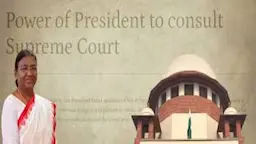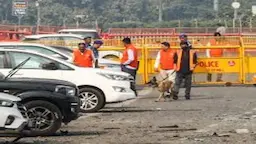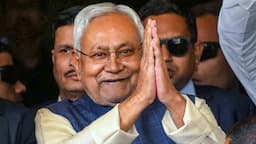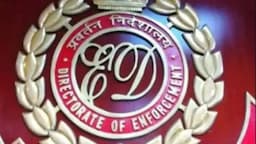Last week, the Supreme Court stayed the recommendations of the National Commission for Protection of Child Rights (NCPCR) to close government-aided madrasas that do not comply with the Right to Education (RTE) Act. The court also directed the UP government to admit non-Muslim students to formal education schools.
SC's order brought significant relief to Ashraf Ali, the state president of the Madrasa Aadhunikaran Shikshak Ekta Samiti UP, but has left the future of teachers and students in limbo, according to a report in Outlook.

On Oct 21, a three-judge bench presided over by Chief Justice of India DY Chandrachud heard a plea from Jamiat Ulama-i-Hind, who argued that the NCPCR's recommendations violate the rights of religious minorities under Article 30. The Chief Justice stated, “Is it in national interest to ban madrassas, or should they be mainstreamed? People will send their children to madrassas even if they are not recognized. It would be for the state to mainstream the syllabus.”
Article 30 of the Constitution guarantees minorities the right to establish and manage educational institutions in line with their ideology.
In June, the NCPCR issued recommendations asserting that madrasas not compliant with the RTE rules should be closed. These recommendations followed the Allahabad High Court's ruling in March, which struck down the UP Board of Madrasa Education Act, 2004, labeling it "unconstitutional" and contrary to the principle of secularism.
The High Court stated that the state lacks the authority to create a board for religious education or establish schools focused on a specific religion and its ideology. It further ordered the state government to admit affected students into government schools, leaving many children’s futures uncertain.
The UP Board of Madrasa Education Act of 2004 established a framework for the recognition, curriculum, and administration of madrasas across Uttar Pradesh.
“The state-recognized madrasas were instructed to transfer non-Muslim students to government schools, while unrecognized madrasas were told to close down,” Ashraf Ali, a Hindi teacher at a madrasa in Bahraich was quoted as saying.
“Thanks to the Supreme Court's stay on the decision, operations continued as usual. However, we still remain uncertain about the future, which has unsettled us,” he told Outlook.
Ali emphasized that for many thousands of students enrolled in these madrasas, this is often their only viable path to education.
“In remote village areas lacking government schools, even non-Muslim children attend madrasas. They have had no issues with the madrasa curriculum or how it is taught,” Ali noted.
He also mentioned the economic factors, as many students cannot afford alternative schooling options. He stated that transferring these students to government schools would be an impossible task.
“The government knows that accommodating so many madrasa students in government schools would not be feasible,” he asserted.
However, over the past decade, the conditions in madrasas have deteriorated rather than improved. In February this year, thousands of madrasa teachers in UP protested against nearly six years of unpaid salaries under the Scheme for Providing Education to Madrasas/Minorities (SPEMM).
The SPEMM scheme includes sub-schemes: 'Scheme for Providing Quality Education in Madrasas (SPQEM)' and 'Infrastructure Development of Minority Institutes (IDMI)'. SPQEM aims to enhance educational quality in madrasas by integrating modern subjects like English, Hindi, Mathematics, and Science into the curriculum, while IDMI focuses on infrastructure development.
Originally introduced as the Madrasa Modernisation Scheme in 1993 to incorporate modern subjects into the madrasa curriculum, the SPEMM scheme was renamed in 2014-15, setting salaries for teachers at ₹6,000 for graduates and ₹12,000 for postgraduates.

However, with increasing irregularities in salary payments, many teachers took side jobs, such as providing private tuition or selling fruits and vegetables on the roadside to make ends meet.
“We are just managing to keep the madrasas running with almost no funding from the state,” Ali remarked.
Uttar Pradesh has one of the largest numbers of madrasas in India. Of the 16,513 recognized madrasas, 560 are government-aided, while over 8,400 are unrecognized.



%20(1).jpg&w=3840&q=75)













